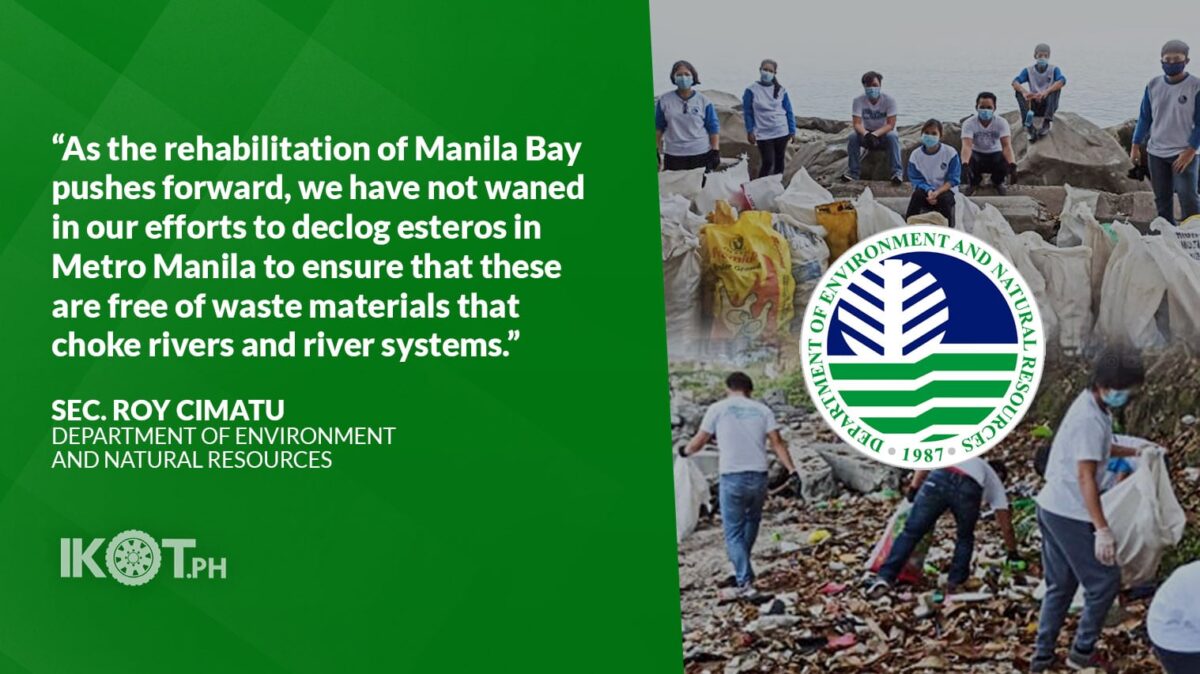The Department of Environment and Natural Resources (DENR) has vowed to continue its cleanup operations in Manila Bay and its tributaries to help prevent flooding due to clogged waterways.
“As the rehabilitation of Manila Bay pushes forward, we have not waned in our efforts to declog esteros in Metro Manila to ensure that these are free of waste materials that choke rivers and river systems,” Environment Secretary Roy Cimatu said.
“Declogging these waterways bring back their depth to prevent overflow that inundate nearby communities and lead to loss of lives and property.”
“Declogging these waterways bring back their depth to prevent overflow that inundate nearby communities and lead to loss of lives and property,” Cimatu added.
As of Oct. 29, the DENR cleanup activities within the Manila Bay region have covered a total of 51.88 kilometers of primary esteros and removed 526,477.58 cubic meters of garbage and silt.
Before emptying into Manila Bay, these esteros drain into primary river systems, such as Pasig, San Juan, Las Piñas-Zapote, Taguig-Pateros, Parañaque, Marikina, and Navotas-Malabon.
The DENR conducts regular cleanup activities in creeks leading to these river systems. The cleanup activities include clearing, desilting, grubbing, removal and hauling of submerged garbage in esteros.
These activities have also lowered the fecal coliform level in the Manila Baywalk area from 62,700 most probable number per 100 millimeter (mpn/100ml) in January 2019 to 9,200 mpn/100ml in September 2020.
The environment chief, who chairs the Manila Bay Inter-Agency Task Force, said the cooperation of all stakeholders was essential and critical in restoring the water quality of Manila Bay.
“The DENR has been working with local government units and has entered into partnerships with the private sector to sustain the efforts initiated by the task force,” the environment head stressed.
“Garbage-free waterways will help mitigate flooding as typhoons intensify and increase in number every year because of climate change.”
According to him, “garbage-free waterways will help mitigate flooding as typhoons intensify and increase in number every year because of climate change.”
In partnership with the Department of Public Works and Highways, 78.34 percent or 656,180.72 cubic meters out of the targeted 837,572.42 cubic meters of dredged materials have been removed from creeks and rivers.
Other solid waste management interventions to clean Manila Bay include the installation of trash traps or trash screens in esteros to prevent trash from further flowing downstream, and the distribution of rolling trash bins and tri-bike or habal-habal in barangays for proper waste collection.
The DENR hired estero rangers to cleanup esteros, collect garbage particularly in areas not accessible to garbage trucks, and to report indiscriminate waste disposal.

